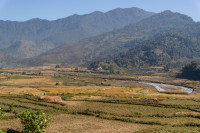Opinion
Health is wealth
While the government is unable to spend the entire health budget, people are languishing without proper healthcare
Jeeban Ghimire
Nepal has, to a significant extent, achieved the targets of health-related Millennium Development Goals (MDG). For instance, mortality among children below five has decreased from 54 to 38 per 1,000 live births. But the mortality of babies within 28 days after birth is 23 per 1,000 live births, which is relatively high. Many low income countries are far behind the targets of MDGs. Yet, Nepal should not be too quick to blow its own trumpet as several of its health indicators are still lower than those of other low income countries. But as the great philosopher Plato put it “attention to health is life’s greatest hindrance.”
Now that the MDGs are done with, the new aim in front of the country is the Sustainable Development Goals (SDGs). With regard to health, Goal 3 of the SDGs states: Ensure healthy lives and promote well-being for all at all ages. Good health and well-being include universal health coverage, financial risk protection, and access to quality healthcare services and to safe, effective and affordable essential medicines and vaccines for all. This is because of the mandate of universal health, which means people should have access to the healthcare they need without financial hardships. Universal health coverage aims to achieve better health and aspires to develop quality, affordable healthcare.
Ideal expenditure
Now our discussion and attention should be focussed on outcome-based health financing in the country. According to the World Health Organisation (WHO), the ideal expenditure in the health sector should be five percent of the Gross Domestic Product (GDP), but Nepal government’s investment in health is only about two percent of the GDP. Out of the alloted money, the health sector’s budget expenditure was only 72 percent last year and only 13 percent so far in this year. While the government is having trouble spending the health budget, many people have to rely on expensive private institutions due to the inaccessibility of quality and standard health services provided at government hospitals. The brunt of poor government health services is borne by the poorest living on less than $1 per day.
Moreover, the population in the country is increasing—the current population is 28,266,209 whereas 20 years ago it was 18,491,097. According to the Central Bureau of Statistics, the population growth rate of Nepal is 1.2 percent per annum. The population has increased by about 65 percent from 1991 but our health structure has remained the same since it was reformed then. While the unemployment rate of health professionals is increasing in urban areas, in many parts, particulary rural ones, a person has to walk for several hours to reach a health facility, where there are few health professionals.
Political commitment
Achieving universal health coverage for the entire populaton is a formidable challenge. Reforming the health sector is essential, but the government needs to focus more on poor families, which lag behind the rest of the community. Poor families are unable to get many of the health services.
Quality and affordable universal health coverage can still be achieved in the country if the government is truly committed to it. A new constitution was promulgated last year and a new health policy was also issued by the Ministry of Health. Now that the country will soon be strutured in a federal set-up, the government should accord greater priority to the health sector. To this end, government health institutions should be expanded with at least a regular year-round clinic having no less than one nurse and one paramedic health worker in each ward. The major duty of these health facilities should be to promote healthy behaviour and provide basic health services. These interventions should be people-centered. Simultaneously, existing health facilities around the country, particulary in the rual areas, need to be upgraded not just on paper but in practice by deploying a number of health workers and by establishing more health facilities with quality service. We observe very poor sanitation in most of the public health facilities around the country, which reflects apathy towards people’s lives. The media can also help by highlighting the issue. Health insurance, supply of medicines and a well-functioning health information system are very urgent in our context. The government needs to realise that the country cannot prosper without a healthy population.
Ghimire is a PhD student at Texila American University




 17.12°C Kathmandu
17.12°C Kathmandu










